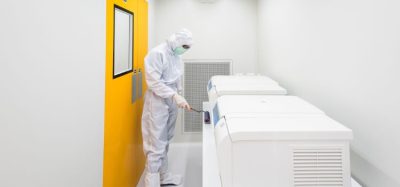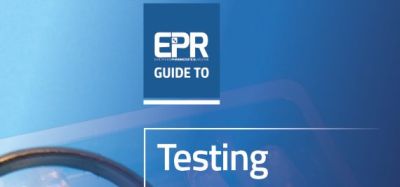Under the microscope: Foster Jordan, Senior Vice President, Charles River
Posted: 10 July 2012 | Helen Difford (European Pharmaceutical Review) | No comments yet
Foster Jordan, Corporate Senior Vice President, Endotoxin and Microbial Detection, Charles River discusses QC testing and why it is so important in the pharmaceutical industry.


Foster Jordan, Senior Vice President, Charles River
Over 60 years ago, Charles River started out in the production of research models for biomedical research before transforming into a global provider of essential products and services to advance research in drug discovery and development. One of their key innovations is in the area of endotoxin and microbial detection. Endotoxins are molecules present in the cell wall of gram-negative bacteria, such as E. coli and Salmonella. When they enter the human body, endotoxins create serious physiological problems, including, but not limited to, fever, mild hypotension and inflammation (low doses) as well as alterations in organ function and septic shock (high doses). “Endotoxins are ubiquitous in nature and are difficult to remove from drugs after the manufacturing process,” Foster Jordan, Corporate Senior Vice President, Charles River Endotoxin and Microbial Detection explains. “It is critical for pharmaceutical companies to be able to detect and eliminate endotoxins from the drug manufacturing process.”
Charles River uses the Endosafe®-PTS™ and Endosafe®-MCS™ systems for endotoxin sample testing. The PTS™ systems is a portable unit with single pack cartridges for real-time, on-line analysis (ideal for small volume nuclear pharmacy labs), while the MCS™ system uses multi-pack cartridges for high-volume central testing labs. “Every customer has unique endotoxin testing requirements and through put demands,” Jordan says. “Both systems utilise FDA-approved, singleuse disposable Limulus Amebocyte Lysate (LAL) test cartridges to detect contamination at the point of sampling or in the central lab with minimum analyst training. We manufacture these cartridges by filling, drying and sealing all necessary reagents required to perform the FDA-required LAL test. After manufacturing, each batch of cartridges is calibrated with the USFDA reference standard endotoxin to meet the USP/EP requirements. The user is only required to insert a cartridge into an MCS™ or PTS™ instrument, type in the calibration code, add the sample and hit Enter before the assay is completed within 15 minutes.”
Biological manufacturers were an early adopter of the PTS™/MCS™ technology. “They have extremely high in-process material value, so it’s important for them to have rapid and reliable in-process testing results,” Jordan reveals. “The PTS™ technology gives them the ability to bring the test on-line, which can improve their sample turnaround dramatic – ally. As a direct result, they have reduced scrap rates, improved capacity, lowered cost and improved compliance.”
Quality control is an essential operation of the pharmaceutical industry, so ensuring FDA and EMA approval for QC testing is vital, yet rapid methods are typically conceived to be non-compliant with these standards. “Biopharmaceutical companies are typically very conservative in all aspects of QC testing, and it’s the regulatory compliance team’s job to ensure there are no issues that can arise from an FDA inspection or New Drug Application,” Jordan clarifies. “The easiest route, therefore, is the status quo, which in most cases is strict adherence to compendial guidance documents that are often way behind current technology. It takes companies with vision and who are slightly less risk adverse to truly see the benefits of implementing the new rapid methods.”
This is not the only challenge facing the pharmaceutical industry. Patent expirations, healthcare cost controls and all-time high costs for FDA approval for new drugs are making the traditional drug development model obsolete, while the research and development process is becoming more complex. “Drug companies need customised support to achieve the efficiency and cost-effectiveness necessary to bring new drugs to market faster and at a lower cost, which is why they are turning to CROs,” Jordan illustrates. “CROs have the scientific expertise and state-of-the-art infrastructure not only in specific areas, but across the entire development process. CROs are evolving to become long-term partners rather than individual product or service vendors, getting involved earlier in the R&D process.” It is becoming more common for companies to open up and work together with other companies to share the costs of drug discovery and development. CROs are useful partners because they can focus on the overall success of a drug candidate, rather than isolated study successes or failures. ‘’Accelerating drug develop ment. Exactly.’’ is the Charles River motto and the company continues to expand and develop with the evolving pharma – ceutical industry.








